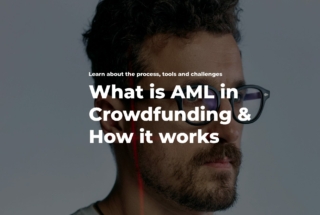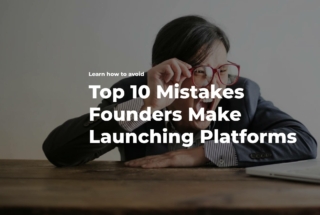How to Start a Marketplace Lending Platform
Marketplace lending, or MPL, is a disruptive form of lending that provides investors with an easy way to lend money to businesses via an online platform. Unlike traditional banks that make money by charging an interest, MPLs generate income by charging a small fee or commission for payments made through the platform and matching the borrowers with investors. Most platforms work by splitting money invested by lenders into smaller sums that can be lent to multiple borrowers.
One of the reasons MPLs are on the frontlines of disintermediation of banks is that they make loans more accessible. For example, if a borrower has only previously relied on credit card debt, having to pay high interest rates, they might not be eligible for a bank loan. MPLs provide a crucial solution to those borrowers, such as when a student is looking to loan some money to pay university fees.
Here, we explain what marketplace lending is and how to create your own marketplace lending platform.
What you will learn in this post:
Steps to launch a marketplace lending platform
Marketplace lending as a phenomenon initially branched out of peer-to-peer (P2P) lending, the difference being that MPL lenders are institutions that invest in bundles of loans, whereas P2P platforms act to connect the retail investors with a single borrower at a time. This being said, the way an MPL platform is created is very similar to that of a P2P lending platform.
To start a marketplace lending platform, you will need to follow five basic checkpoints:
- Raise the starting capital (if you don’t already have it)
- Register your company with the local authority and make sure it complies with the regulations. E.g. The application process in the UK takes up to 6-8 months.
- Learn about the regulatory framework
- Hire a team of qualified individuals (i.e. director, underwriter, developer)
- Choose the loan-management software for the platform and build it.
Raising the capital
To set up an operational marketplace lending platform you may need around $150,000 as a base capital. The costs may include annual software subscription, customisations, licensing, etc. This is a good minimum amount which allows you to work with different software providers and enables you some room for maneuver and negotiations.
The less capital you have, the less negotiable a deal becomes, since you can’t change the functionality or pick the required integrations, etc. So, 150K is good starting point to help you get started with an MPL.
Regulations
The regulations for marketplace lending platforms will vary depending on the authority in each country. For instance, compare the requirements in the US and UK:
| United States | United Kingdom | |
| Regulatory authority | FDIC, OCC, CFPB, SEC and FTC + subject to state laws | FCA |
| Minimum capital | $5,000 to 1million (+ securities registration fee of $109.10 per $1 million) | £50,000 |
| Borrower protection | Federal Consumer Protection Regulation | Subject to CASS rules |
| Company registration | SEC and FINRA | Companies House |
When it comes to SEC, there are certain conditions for the companies registered with it (according to the 2020 summary of regulation of marketplace lending):
- “The aggregate amount of securities sold by the issuer in reliance upon the Section 4(a)(6) crowdfunding exemption may not exceed $1.07 million in any 12-month period. Securities sold by the issuer in offerings registered with the SEC or pursuant to other exemptions will not count against the $1.07 million limit”
- “Investors having an annual income and/or a net worth of less than $107,000 may purchase not more than the greater of $2,200 or five percent (5%) of the lesser of the investor’s annual income or net worth, and investors having both an annual income and a net worth of $107,000 or more may purchase not more than the lesser of $107,000 or ten percent (10%) of the lesser of the investor’s annual income or net worth”
- “Any issuer offering more than $535,000 of securities must provide audited financial statements (subject to an exception for certain first-time issuers). If the offering amount exceeds $107,000 but not $535,000, the issuer must provide audited financial statements (if such statements are available) or statements reviewed by an independent public accountant (if they are not). If the offering amount is $107,000 or less, the issuer must provide audited or reviewed financial statements or, if such statements are not available, must disclose its total income, taxable income, and total tax for its most recently completed fiscal year and must provide its financial statements, in each case certified by its principal executive officer. The issuer must file the disclosure information with the SEC before commencing the offering and must make certain other filings during the course of the offering.”
In addition, the recent developments regarding the True Lender Litigation in Colorado must be considered. Specifically, this addresses the issue of whether the MPL platform or the Funding Bank (the institution that originally funded the loans that the MPL platform has marketed) is the “true lender”. This results in uncertainty in the market and challenges federal preemption on insured banks by federal law, which has a great economic impact. Luckily, recently the litigation has been settled, allowing platforms to work with Funding Banks to make loans as long as they don’t exceed 36% APR (annual percentage rate).
Taking into account that marketplace lending is an emerging sector, there are certain regulatory issues that applicants might come across when registering a business:
- (In the US) Uncertainties over the degree to which federal and state laws apply to particular MPLs. It’s an ongoing debate that state regulations hinder the growth of the industry, contemplating whether the federal bank regulations should apply to marketplace lenders (e.g. the True Lender Litigation)
- Authorities for marketplace place lenders, e.g. if an MPL is granted a special purpose national bank charter, it becomes subject to regulation by OCC.
- Risk-retention rule. According to the 2018 CRS report, “The rules generally require an institution that securitizes loans into a pooled security to hold a portion (usually 5%) of the underlying assets on its balance sheet. Potential loss from loans defaulting is an incentive for the originator to maintain careful underwriting practices and not make excessively risky loans. Some observers assert that marketplace lenders face the same incentive to weaken underwriting that issuers of pooled securities do and should be subject to the rule.
Others assert that risk retention is unnecessary because, among other reasons, the simplicity of a single loan—unlike a security backed by numerous loans and featuring complex structures regarding returns to investors— makes it easier for an investor to understand the risks she is taking.”
Building an MPL platform
When starting a marketplace lending business, there are two options: you can either create your own MPL platform from scratch, or buy an existing platform/template.
When it comes to making an MPL platform, once again, you can choose between hiring an in-house team or partnering with an outside software developer.
In any case, after the initial agreement and project discussion with the sales manager, there are a number of steps in the development process:
- Collaboration with a business analyst to identify project needs and market fit
- Project discovery and documentation
- Establishment of a collaboration model and team assignment
- Full-cycle and feature development
- Testing and final touches
- Maintenance and support
On average, to build a prototype you’ll need around $75,000, and as mentioned earlier, a market-ready operational platform will cost around $150,000 or more. This money pays for the following aspects of the project:
- Custom design for your platform
- Payment processing system
- Content management system
- Automated KYC/AML verification
- Debt and equity investment options
- Investment and settlement flow
- Account management and search systems
In contrast, existing platform prices start at $35,000, which includes a one-time setup and monthly/quarterly fees. The exact price may vary depending on the provider and their solution.
This option is usually less time-consuming, although often it has limited customisation capabilities. However, our crowdfunding software, LenderKit, preserves the flexibility while maintaining the cost- and time-efficiency of any other marketplace lending software. Our built-in features include:
- Admin dashboard with visualised analytics and reports
- Responsive customisable design
- Automated AML/KYC verification
- Client registration
- Compliance with regulations
- Powerful data management tools
- Compatibility with third-party applications and tools
- Secondary market
Marketplace lending explained
P2P lending is becoming increasingly popular, particularly in the developing world. According to the Statista 2021 report, the alternative lending market as a whole had a staggering $291.4 billion transaction value in 2020, 86% of which is accounted for by China. It is an extremely lucrative area to be working in at the moment, so let’s take a look at how marketplace lending works.
What is a marketplace lending loan
Marketplace lending loans are requested on a marketplace lending platform by private users. The platform connects them with private investors that lend at a set interest rate that can be calculated from the credit score. There are several types of MPL loans:
- Retail buy-to-let mortgage
- SME loans
- Personal loans
- Student loans
- Medical loans
- Auto loans
Depending on the type of loan and the business model, there are various types of marketplace lending platforms. At the moment, the best niches for start a MPL platform are:
- Student financing
- Real estate
- Auto financing
- SME financing
Final thoughts
Regardless of what niche your business is in, there are two options for building an MPL platform:
- Creating from scratch with an in-house developer or by outsourcing a dedicated team
- Using a ready-made customisable white-label crowdfunding software, such as LenderKit.
LenderKit can help you get the project off the ground and make sure that it complies with all the local regulations, while costing 50%-70% less than making a platform from scratch.
If you would like help with your MPL platform goals, get in touch with our team to have a chat about your project.




